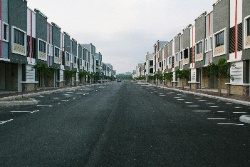New regulations on trees and power lines
New regulations on trees and power lines
New regulations governing the trimming of trees near power lines are designed to promote safety and help maintain power supplies.
"The absence of any clear definition of the rights and responsibilities of tree owners and line companies has led to disputes and delays in dealing with hazards," says Energy Minister Pete Hodgson.
"These regulations are designed to promote safety and help prevent power outages and fires caused by problems with trees and power lines." The regulations, gazetted today, define safe separation distances between trees and power lines and specify who is responsible for ensuring the clearances are maintained.
Since 1992, apart from shelterbelt trees, there has been no regulation of separation distances. The 1992 review of the Electricity Act removed the rights of line companies to enter private property and trim or remove trees near lines. In the absence of regulations the common law on nuisance and negligence applies and remedies can only be sought after safety and reliability of supply have been compromised.
"There is general agreement among landowners and line companies that regulations are needed to clarify rights and responsibilities," Mr Hodgson said.
Under the new regulations landowners gain the opportunity to declare an interest in particular trees on their land that grow near power lines. If they do so, the line company is obliged to give notice when the designated tree or trees needs trimming. The landowner is then responsible for the cost of trimming, except for the first trim under the new regulations, which will be paid for by the line owner.
Where landowners declare no interest in their trees, all cost and responsibility for trimming or removal falls on the line owner.
Attached is a summary of the implications of the regulations for land owners, local authorities and line owners. A detailed summary of the regulations is available on the Ministry of Economic Development website, http://www.med.govt.nz
Implications of the Trees Regulations
Landowners Landowners will be required to decide if they have an interest in the individual trees on their property. They are expected to maintain an interest in trees which contribute to the appreciation of the area or provide shelter or screening to the adjoining property. Where an interest is maintained, landowners will be responsible for the costs of trimming the tree to maintain the regulation safety distances. Where ‘no interest’ is declared, all costs and responsibility falls to the line owner. If a landowner does not allow the line owner reasonable access to trim or remove the tree, the ‘no interest’ notice is rescinded and the landowner is responsible for maintaining the tree (including the cost of the first trim). The regulations will not affect any agreement between a landowner and a line owner on tree removal and maintenance, except with respect to separation distances.
Local Authorities A local authority is required to maintain an interest in trees it owns that are subject to clearance or pruning restrictions under a District Plan. If a tree that is owned by the local authority is not subject to clearance or pruning restrictions under a District Plan, that tree is subject to the interest/no interest regime under the regulations. Where an interest is maintained, the local authority will be responsible for the costs of maintaining that tree (excluding the first trim). The regulations will not affect any agreement between a local authority and a line owner on tree removal and maintenance, except with respect to separation distances.
Line Owners The line owner must issue an information notice, at least annually, to consumers informing them of the dangers of contact between trees and live power lines, the cutting of trees near lines and an explanation of the requirements and penalties in the regulations. The line owner will be responsible for monitoring separation distances and issuing notices to landowners where a tree encroaches or is near to encroaching them. The line owner will be responsible for the cost of the first trim where a landowner maintains an interest in a tree. The line owner can elect to perform the first trim itself. Where no interest is declared, the line owner can fell the tree if it chooses and will be responsible for the costs of removing it. Where a private landowner declares ‘no interest’ in a tree that is subject to District Plan clearance or pruning restrictions, the line owner may require resource consent to trim or fell the tree.
SUMMARY OF THE ELECTRICITY (HAZARDS FROM TREES) REGULATIONS
Purpose
The regulations provide for the control of trees adjacent to electricity lines. The purpose of the regulations is to protect the security of the supply of electricity and the safety of the public.
General information notice to consumers
In order to ensure that land owners are aware of their responsibilities and liabilities under the regulation, line owners are required to issue to electricity consumers, at least annually, an information notice outlining the dangers of contact between trees and live power lines and the operation of the regulations.
Hazard warning notice
When a line owner becomes aware of a tree growing within the specified separation distance of a power line, the line owner may give a hazard warning notice to the tree owner. The purpose of a hazard warning notice is to warn a tree owner that a tree encroaches a notice zone and must not encroach a growth limit zone. The regulations prescribe the content of the hazard warning notice.
Cut or trim notice
If a line owner becomes aware of a tree encroaching the growth limit zone 18 months or more after promulgation of the regulations, it must issue a cut or trim notice. If this occurs less than 18 months after promulgation, the line owner may issue the notice. The purpose of a cut or trim notice is to notify a tree owner that a tree encroaches a growth limit zone and must be trimmed. The regulations prescribe the content of the cut or trim notice.
Once a cut or trim notice has been issued, the tree owner must, within prescribed time limits, have the tree cut or trimmed so that it does not encroach on the notice zone.
Line owner to meet costs of first cut or trim in certain cases
Following the initial cut or trim notice issued by a line owner to a tree owner under the regulations, the line owner must meet the cost of the first cut or trim. In these circumstances, the line owner may perform the cut itself, provided any application for dispensation/arbitration has been settled and permission to enter the land has been obtained.
Debris
If a tree owner is required to have a tree cut or trimmed, the tree owner must remove or tidy any resulting debris in such a way that it does not affect the use or enjoyment of any adjoining land by its owner or occupier.
A line owner is required to remove debris caused by any cutting or trimming that it undertakes.
Underground line safety
To permit the safe repair or operation of an underground line, a line owner may sever and remove any tree roots that are within 0.5 metres of that line.
Obligation to remove danger to persons or property from trees damaging lines
A line owner must, without delay, undertake any necessary work on a tree (including the roots) if the line owner becomes aware that there is immediate danger to persons or property from a line.
For the purposes of removing danger to persons or property, a line owner may cut or trim the tree to the extent necessary to remove the danger. However if the line owner wishes to cut or trim the tree so that it no longer encroaches on the notice zone, it must obtain the consent of the tree owner.
Liability for costs
When a line owner undertakes any work to remove a source of immediate danger, the tree owner is liable for the direct costs of that work if the tree owner has failed to abide by the regulations.
A line owner may claim direct costs from the tree owner where damage to a line arises (directly or indirectly) from a tree owner’s failure to comply with the requirements of these regulations or with the conditions of an order made by an arbitrator. The costs may be recovered as a debt due.
A line owner is liable for any costs of remedying any damage caused to a line if the line owner fails to comply with the requirements of these regulations, such as the requirement to issue a cut or trim notice when a tree encroaches the growth limit zone.
“No interest” tree notices
An owner or occupier of any land on which a tree is growing adjacent to a line before the commencement of regulations may give a “no interest” tree notice to a line owner. A “no interest” tree notice may be given whether or not the owner or occupier has received a hazard warning notice or a cut or trim notice.
The purpose of a “no interest” tree notice is to notify a line owner that the owner or occupier of the land on which the tree is growing has no interest in the tree. The line owner is then entitled to have the tree removed or trimmed, if it first obtains permission to enter the land on which the tree is growing.
If a line owner receives a “no interest” tree notice and fails to remove the tree within 20 working days of receiving the notice, and the tree subsequently causes damage to any line, the owner who gave the notice is not liable for the costs of the damage.
Where a tree is owned by a local authority and is subject to pruning restrictions in a district plan, the “no interest” notice is of no effect.
The regulations will not affect the maintenance of power lines crossing land managed by the Department of Conservation, including reserves, national parks and conservation areas, or reserves managed by local authorities or other administering bodies. This preserves the existing practice whereby line owners are responsible for trimming work, with an appropriate permit from the administering body.
Rescinding of “no interest” notices
A declaration of “no interest” can be rescinded at any time by informing the line owner in writing and the status of the tree will revert to its status prior to the “no interest” notice being given.
If a line owner receives a “no interest” tree notice, and the owner or occupier who gave the notice refuses to allow the line owner to enter the land to remove the tree, the “no interest” tree notice is immediately rescinded.
Dispensations
A tree owner who receives a hazard warning notice or a cut or trim notice may apply to the line owner for a dispensation from cutting or trimming that tree so that it does not encroach the notice zone. A dispensation permits the tree owner to allow the tree to encroach the notice zone, but not the growth limit zone.
An application for a dispensation may be made at any time, but if the tree owner is given a cut or trim notice, the application must be made no later than 5 working days after the date on which the tree owner received that notice. The application for a dispensation must be in writing.
If a line owner receives an application for a dispensation, the line owner must decide whether to grant the dispensation and if so, its duration and any caveats attached. A dispensation must be granted if the line owner is satisfied that the tree is unlikely to come into contact with a line.
Arbitration
The Minister may appoint suitable persons as to act as arbitrators for the purposes of these regulations. Arbitrators determine disputes between tree owners and line owners concerning the decision to grant, and the conditions of, an application for dispensation. The regulations prescribe the orders that the arbitrator may make and the time limits for applying to an arbitrator.
Offences
A tree owner who is given a cut or trim notice relating to a tree and fails to have the tree cut or trimmed, or fails to advise the line owner of the time and location of the cutting or trimming of the tree, commits an offence. The maximum fine is $10,000 and, if the offence is a continuing one, a further fine will apply of up to $500 for every day or part of a day during which the offence has continued.
A line owner commits an offence if:
it fails to give the information notice to its electricity consumers; or
it becomes aware of a tree encroaching a growth limit zone in respect of a line belonging to it and fails, without reasonable excuse, to give a cut or trim notice to the tree owner in respect of that tree.
It is proposed that a summary conviction would result in a fine not exceeding $10,000 and, if the offence is a continuing one, a further fine not exceeding $500 for every day or part of a day during which the offence has continued.
Miscellaneous provisions
Certain rights and obligations remain unaffected by these regulations:
the right to compensation under s 58 of the Electricity Act for removal of trees existing before the construction of a line;
the requirement to comply with certain safety obligations under the Electricity Regulations 1997;
any claims that a line owner may have against a tree owner in respect of any damage caused to a line by a tree owner.
The regulations do not affect the operation of any agreement between a line owner and a tree owner provided it does not alter minimum distances from line as specified in the schedule to the regulations.
Revocations
The Trees (Electric Lines) Regulations 1986 are to be revoked.
Ministry of Economic Development
December 2003


 Gordon Campbell: On unemployment, Winston Peters’ low boiling point and music criticism
Gordon Campbell: On unemployment, Winston Peters’ low boiling point and music criticism Labour Party: National Gaslights Women Fighting For Equal Pay
Labour Party: National Gaslights Women Fighting For Equal Pay The Treasury: New Treasury Paper On The Productivity Slowdown
The Treasury: New Treasury Paper On The Productivity Slowdown NZ Government: Government Recommits To Equal Pay
NZ Government: Government Recommits To Equal Pay Emily Ireland - Local Democracy Reporter: Deputy Mayor ‘disgusted’ By Response To Georgina Beyer Sculpture
Emily Ireland - Local Democracy Reporter: Deputy Mayor ‘disgusted’ By Response To Georgina Beyer Sculpture Te Pāti Māori: Māori Unemployment Rate Increases By More Than Four-Times National Rates
Te Pāti Māori: Māori Unemployment Rate Increases By More Than Four-Times National Rates Government: Streamlining Building Consent Changes
Government: Streamlining Building Consent Changes


